Interview| I’ll Push You
On October 26th, I had the privilege of talking to Patrick Gray and Justin Skeesuck, the stars of the latest documentary set on the Camino de Santiago, “I’ll Push You”, as well as one of the directors, Terry Parish. Justin has a rare disease that has put him in a wheelchair, and Patrick is his closest, lifelong friend. The movie follows them as they walk the 500-mile pilgrimage through Spain. You can read my review of the film at RWT in the next few days and check out the film in theaters all over the USA on November 2nd through Fathom Events.
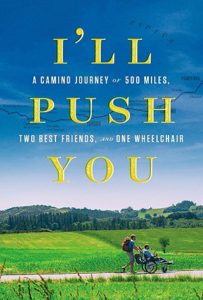 Hunter: We have readers who probably have no idea about what the Camino is. Justin, could you give a brief description for them of the Camino de Santiago?
Hunter: We have readers who probably have no idea about what the Camino is. Justin, could you give a brief description for them of the Camino de Santiago?
Justin Skeesuck: Yeah, it’s an ancient pilgrimage that dates back to around the ninth century, where people started walking from their homes, some from as far as Jerusalem, to pay homage to St. James at the site where his bones rest, at the cathedral in Santiago. It started as a Catholic pilgrimage, and then became a trade route as well. Now it draws a lot of people from all over the world. There’s also the scallop shell that’s a symbol of the pilgrim. The veins on the shell represent the fact that all roads lead to Santiago, and the shells were also used as utensils and bowls in the early days. People go on it at any time of the year. You can walk as little or as long as you like.
To get your Compostela, which is your certificate of completion, like your documentation that you did the pilgrimage, you have to walk the last 100 kilometers. There are starting points in Portugal and Spain that allow you to complete that amount. Some people walk it over the course of years, like they’ll just do a week or a couple days at a time. In our case, we started it in St. Jean [a French village in the Pyrenees, 500 miles away from Santiago] and it took us 35 days. That’s it in a nutshell. Did you see the movie early?
H: Yes, I got to watch the movie.
JS: Sorry you had to see my butt so many times. [all laugh]
H: So that brings up a question, how do you feel about people all over the country seeing your butt next week?
JS: It’s definitely embarrassing, but it’s part of the story I guess.
H: How much of the film did you see throughout the process of editing it, and what was it like to see interviews from your family?
JS: With our wives, we had no idea what they said until we saw the “80% cut” version. It’s refreshing to see how much they love us, and how much they sacrificed in our dreams and hopes and craziness to do this thing. And it’s not just with me and my wife, but also what Donna sacrificed so Patrick could go and understanding that. Likewise, Patrick understood more of what Kirsten sacrificed.
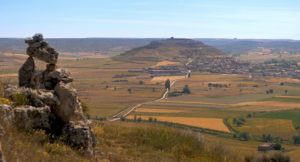 Patrick Gray: Yeah. To add to that, I really appreciate Chris and Terry’s decision not to let us see it as they filmed and as they edited. I’m sure if we’d really wanted to see it they would have let us. There were times when they’d have Justin for a long interview and I’d be like, “Can I watch it?” But then I’d say, no it’s fine. But it was like that all along the trail, so when we finally watched the 80% cut I would say my reaction was pretty visceral in a good way. Seeing that interview where he’s sitting wearing his red [inaudible] in the wheelchair, I didn’t see that until I watched the movie. We didn’t see any of the wives until we watched the movie. It gave us a greater appreciation for how much was on the table for everyone involved, and really a greater appreciation for the love that was borderline recklessly given. So I really appreciate the decision on Chris and Terry’s part to put it together for us to see those pieces.
Patrick Gray: Yeah. To add to that, I really appreciate Chris and Terry’s decision not to let us see it as they filmed and as they edited. I’m sure if we’d really wanted to see it they would have let us. There were times when they’d have Justin for a long interview and I’d be like, “Can I watch it?” But then I’d say, no it’s fine. But it was like that all along the trail, so when we finally watched the 80% cut I would say my reaction was pretty visceral in a good way. Seeing that interview where he’s sitting wearing his red [inaudible] in the wheelchair, I didn’t see that until I watched the movie. We didn’t see any of the wives until we watched the movie. It gave us a greater appreciation for how much was on the table for everyone involved, and really a greater appreciation for the love that was borderline recklessly given. So I really appreciate the decision on Chris and Terry’s part to put it together for us to see those pieces.
H: So when you saw that Rick Steves video, what was it that drew you to it? Is there one thing you can really point to that made you think, “I have to do this!”?
JS: I don’t think there’s one thing specifically. It’s not that I was looking at the landscape and thinking, “Wow, that looks nice, I want to be in that,” it was – the best way I can describe it is that it called me. I just knew it in my heart and soul and mind and spirit, and knew that I had to do it. You could probably take it a step further and say that God called me. Patrick and I grew up in Christian homes, so faith in Christ is very much a part of how we operate. So it’s just something I knew I needed to do. Which is crazy because I don’t normally do these spontaneous things, and I knew it would be really difficult being in a chair. But I knew I needed to do it.
H: Patrick’s response to your proposal is in the movie, so I don’t want to spoil it, but Terry, how did you get involved in the project?
PG: If I may, I’d like to back up and share how we decided to film it in the first place. We didn’t plan on making a movie to release at all. Film was not in the cards. But when I asked for time off to go on this trek, my boss basically told me, “I’ll do everything in my power to give you time off, as long as you do everything in your power to film it.” And when I asked him why, he said, “If you don’t, you’re selfish and irresponsible.” So at first I was kind of shocked, but it was helpful perspective, and when I mentioned it to Justin, he reached out to Terry.
Terry Parish: The background is that Justin and I went to school together and were in the art department at Point Loma Nazarene University and when Justin reached out I was compelled by what I thought might be the outcome of the story. I had an inkling that they wouldn’t be able to do it on their own and that they’d have to rely on the community of pilgrims around them. Plus, the setting lends itself to story. It’s a story-friendly backdrop with the difficult landscape, serene landscape, exotic landscape. Also, I was at a place in my life – I do a lot of marketing for corporations, so everything from dogfood to high tech pollution, to parts that go in mobile phones and everything in between – so I was in a place in my life where I was ready for an adventure, something that would be completely different. Also I think we find ourselves a lot in the stories we choose to concentrate on, the stories that we focus in on. It says a lot more about us than it says about the other people around us. I feel like there was something for me to learn. How am I both Patrick and Justin?
H: A lot of people I meet on the Camino will ask the question, “Why are you walking this?” What did you tell them when they asked you that?
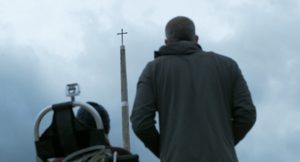 PG: So my why – interesting that you ask that because Justin’s and my approach to life is to ask the why as we approach something and then the details become less ominous to figure out because we’re so excited and passionate about the thing itself. But with the Camino itself, my why evolved over the course of the journey. You know, it started out with, he’s my best friend and wants to do it, so I’ll help him on his journey. That was the original why. But as soon as we’re two, three weeks in, that why shifted and I was facing my own personal demons and really came out on the other side a person I’m proud to be as opposed to someone I wouldn’t want my kids to model. So that’s my why.
PG: So my why – interesting that you ask that because Justin’s and my approach to life is to ask the why as we approach something and then the details become less ominous to figure out because we’re so excited and passionate about the thing itself. But with the Camino itself, my why evolved over the course of the journey. You know, it started out with, he’s my best friend and wants to do it, so I’ll help him on his journey. That was the original why. But as soon as we’re two, three weeks in, that why shifted and I was facing my own personal demons and really came out on the other side a person I’m proud to be as opposed to someone I wouldn’t want my kids to model. So that’s my why.
H: What about you, Justin?
JS: For me, you know, I didn’t really walk it for any sort of awakening or spiritual insight. For me it was more the challenge of, could I do something like this, attempt to do something like this, that hadn’t been done before as far as all the craziness we did of taking the wheelchair over the Pyrenees and all that difficult terrain. So it was a personal challenge, it was to do something with my best friend that I knew we would both be changed for the better for it. And it was beautiful to get to be with Patrick for his part of the journey. It was beautiful to get to be on the front row as he dealt with that and be in the front seat to listen to him, help him work through what he needed to work through, and help him be a better man. He always makes me a better man, he pushes me in all kinds of ways and calls me on BS and is a listening ear. He challenges me to be a better husband and father.
But to go on this journey, it was pretty obvious to most people why I was doing it. I stuck out like a sore thumb. So yeah, the physical side of it was my reason for going.
H: Terry, did you walk it as well?
TP: Yes I did, I walked all 500 miles, pretty much. Either alongside them or in front of them at certain parts of the journey, scouting, and we figured sometimes we should give them a bit of a break and let them know what’s coming.
H: So tell me about the preparation for this, both physically to hike it and technically in order to film and produce a film in the midst of a hike.
PG: As far as the physical side, I actually trained for a year to try to get my body ready. For the first nine months of that, I was in the gym twice a day, six days a week. Or I was at the gym in the morning and on my bike in the evening. So yeah, six days a week, Sundays off, I was in the best shape of my life. But for me the most enjoyable part of the preparation was when Justin’s chair arrived. You know, we had a chair made for this. Justin calls it a three-wheeled baby jogger on steroids – mountain bike tires, three-wheeled chair – and we had to figure out how to navigate that thing collectively. Even though Justin’s sitting in the chair, not propelling himself forward, he’s still getting beat up on the rocky parts of the trail, still trying to figure out some way, somehow to help me out on the tough spots. So as we tried to get more and more mileage, one thing was that when the road would pitch to the right or the left, Justin would have to counterbalance in the other direction. It was an arduous, 9-month preparation.
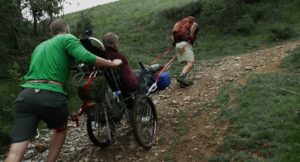 TP: On the technical side, it was a real leap of faith. It was like that scene in the last Indiana Jones where he has to put his foot down and trust something will be there. We would make plans and then God laughed. [All laugh] We thought we’d be able to raise money, we thought, “Who wouldn’t be interested in this?” we thought we’d be able to pay for this with not-our dollars. And as we got closer and closer, Justin and Patrick finally looked at me and said, “Dude, do your business or move on.” So I went to my business partner and said, “I have to do this, even if it’s just on my iPhone.” And he said, no, we can do better than an iPhone. So we got connected with a friend’s son who does photography for extreme sports for Red Bull commercials and stuff like that. Before we knew it, we had flown in someone from Seattle and a tri-lingual guy who turned out to be super helpful, and we had a crew of four and – I wouldn’t say a song in our hearts, but we moved forward with it and it came together.
TP: On the technical side, it was a real leap of faith. It was like that scene in the last Indiana Jones where he has to put his foot down and trust something will be there. We would make plans and then God laughed. [All laugh] We thought we’d be able to raise money, we thought, “Who wouldn’t be interested in this?” we thought we’d be able to pay for this with not-our dollars. And as we got closer and closer, Justin and Patrick finally looked at me and said, “Dude, do your business or move on.” So I went to my business partner and said, “I have to do this, even if it’s just on my iPhone.” And he said, no, we can do better than an iPhone. So we got connected with a friend’s son who does photography for extreme sports for Red Bull commercials and stuff like that. Before we knew it, we had flown in someone from Seattle and a tri-lingual guy who turned out to be super helpful, and we had a crew of four and – I wouldn’t say a song in our hearts, but we moved forward with it and it came together.
JS: It’s a classic example of God doing a lot with very little.
[All laugh]
TP: So every bit of the way it’s been a next step without knowing if the bridge will be there, even with the release of this part through Fathom events. But we believe this will be a valuable story to get out there – we believed it going into this and we believe it coming out of it even more so.
H: So big question for you guys, are you going to do the Camino again?
TP: With the wheelchair?
JS: I think Patrick is on the ground sucking his thumb and curled up in a ball right now [laughs]
PG: My wife and kids and I are planning to do it in a few years when the kids are old enough. As far as with the wheelchair, I don’t know if my knees could hold up, honestly. I have some permanent damage in my body from doing this thing, and I wouldn’t trade the experience for anything, but it just wouldn’t be possible to do it again.
JS: We don’t want to both end up in wheelchairs.
H: Now, Justin and Patrick, you’ve also written a book by the same title, could you tell me a bit about it?
PG: The book is more of its own thing. It’s very different from the film, even though the story is the same. Even just the dynamics of getting the wheelchair from point A to point B and all the relationships that we encountered. In the movie, we couldn’t dive into everyone’s story because it would be a nine-hour movie, you know? So we had to cut it back, and Terry and the guys did a phenomenal job of telling the story, with the theme that plays out throughout the film to be effectively communicated. So what Justin and I did with the other folks we met, who couldn’t be in the film, all those stories are in the book. And in addition to that, the book is written in a dual narrative – you have the Camino narrative, and then you have our lifelong friendship, and they eventually converge on the trail. So it finishes out with one narrative. And it’s been really well-received, people have read it and reflected on their own childhood friends and all the situations where they’ve learned lessons, and they’ve seen how the Camino can be a great way to reflect on your life and be a vehicle through which you can experience some pretty cool revelations.
TP: There’s a lot we wish we could have put in, but the book offers the opportunity to revisit some themes and some things that happen in the movie in a more in-depth way. In the film we had to move through things to an end point. So the book is a good complement to the film. I have friends who’ve watched the film and said, “I want to know more about this person, tell me about that person.” I say, “read the book.” [All laugh] So we’re dealing with the limitation of film. The first cut was 13 hours.
H: Terry, this film is billed as “A Story of Friendship and Faith.” Could you talk about how you portray faith in the film?
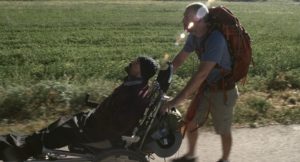 TP: Definitely. First and foremost, Justin and Patrick were very open about their faith. They didn’t hide it and we didn’t make an effort to hide it, but we did make a conscious effort to focus on the actions of faith versus the profession of faith. We felt that that makes the film more approachable and for more audiences. We definitely have been approached to make a film that would be a more come-to-Jesus experience versus one that was just walking in Christ-like faith, and we opted for the latter.
TP: Definitely. First and foremost, Justin and Patrick were very open about their faith. They didn’t hide it and we didn’t make an effort to hide it, but we did make a conscious effort to focus on the actions of faith versus the profession of faith. We felt that that makes the film more approachable and for more audiences. We definitely have been approached to make a film that would be a more come-to-Jesus experience versus one that was just walking in Christ-like faith, and we opted for the latter.
H: Last question: besides “everybody,” who specifically do you hope will see this film?
PG: I hope that people who are facing really hard challenges will see this and walk away with a desire to invest in the relationships they have.
JS: – in an increasingly disconnected world.
TP: I would add to that, I would love it if people who are ready to have their hearts opened saw it. I think it’s not often that we get to see two men that are in an intimate relationship that are not considered romantically inclined, and it’s not defused by some of the exchanges that happen to try to mask the discomfort that comes along with that. I would love to see men go see this film, even though I know it’ll probably be their wives who go see it. [all laugh]
To continue following Justin and Patrick’s story, and find out more how to see the movie after November 2nd, visit their website at IllPushYou.com.


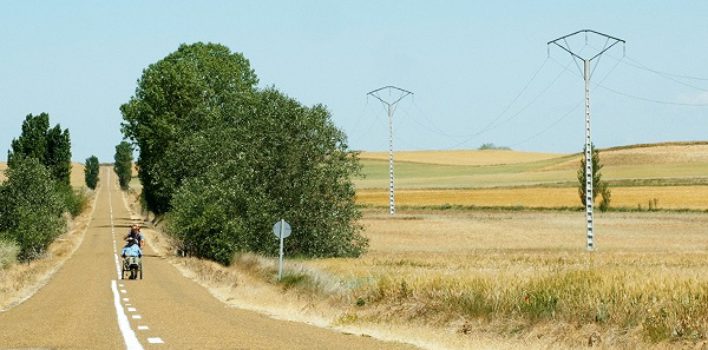
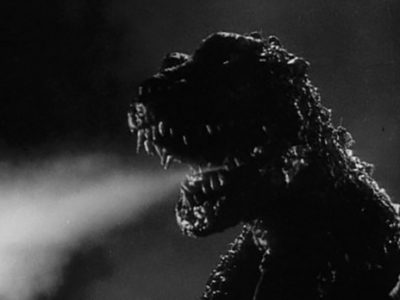
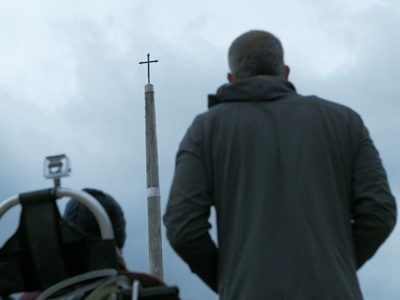
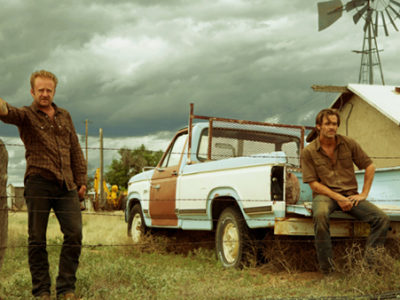


Pingback: Review| I’ll Push You | Reel World Theology